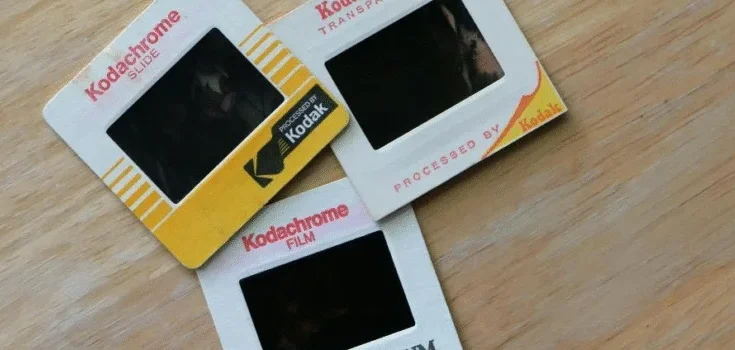Long before digital cameras and smartphones dominated photography, 35mm slides were a standard method for capturing and sharing images. Families, educators, and professionals relied on them to store life’s important moments, project visual presentations, and archive work. Now, decades later, these slides are being rediscovered in closets and boxes, prompting a growing interest in 35mm slide conversion to digital.
What Are 35mm Slides?
A 35mm slide is a piece of film mounted in a 2×2 inch cardboard or plastic frame. The film displays the image in full color and correct orientation—what’s known as a “positive”—unlike negatives, which reverse light and color. These mounted images were meant for projection, offering clear visuals and rich color reproduction.
The popularity of 35mm slides stemmed from their sharp image quality and compact size. Each slide stored a single image, and entire vacations or events could be archived in a single box.
Why the Mount Matters
The mount serves both a practical and protective function. It keeps the film secure, reduces the risk of fingerprints and scratches, and aligns properly in slide projectors and scanners. Without a mount, the thin film would be more vulnerable to damage and harder to organize.
Mounts also made it easier to label and categorize slides, which helped people arrange large collections for presentations or archival purposes.
How People Used 35mm Slides
From the 1950s through the 1990s, 35mm slides played a key role in family storytelling and professional communication. Families gathered in living rooms to show travel photos, birthdays, and holiday events. Educators used them in classrooms, researchers included them in reports, and photographers submitted them for publication or exhibition.
Slides offered advantages over traditional prints, mainly due to their clarity when projected. This format created a visual experience that couldn’t be replicated in photo albums.
Slide Projectors and Viewing Tools
Slide projectors allowed people to view their 35mm slides on a large screen or wall. Most used a carousel to load multiple slides for viewing in sequence. The film’s small size, combined with the projector’s optics, produced crisp, enlarged images.
While projectors are now mostly considered outdated, they were once an essential part of home entertainment and academic settings.
Different Types of Slides
Although 35mm was by far the most widely used format, others exist:
- 126 Slides: Slightly smaller than 35mm, used in Kodak Instamatic cameras.
- 110 Slides: Even smaller, often seen in compact cameras.
- Medium Format Slides: Used by professionals, offering greater resolution and size.
Each type may require different scanning settings or equipment, which is important to keep in mind when selecting a slide scanning service.
Why You Should Digitize Slides
Film isn’t permanent. Over time, it fades. Exposure to humidity, temperature changes, and light can cause permanent damage. Dust, mold, and scratches are also common. By digitizing 35mm slides, you preserve the images for future access and sharing—without needing the original hardware.
Once converted, the files can be stored on a hard drive, cloud account, or USB drive. They become easy to organize, edit, duplicate, and share with others. And instead of sorting through physical boxes, you can scroll through folders on your computer or tablet.
People often look for services to transfer 35mm slides to digital when organizing family archives or preparing presentations from older content.
Options for 35mm Slide Conversion to Digital
When it comes to converting slides to digital, there are two basic routes:
1. Do It Yourself (DIY)
Home slide scanners are widely available, including models that support bulk loading or single-slide scanning. Some connect via USB and come with software to assist with scanning and minor corrections.
This option can be time-intensive. Cleaning, aligning, scanning, renaming, and storing files takes patience—especially with large collections.
2. Use a Professional Slides to Digital Service
Many people choose to convert slides to digital through companies that specialize in photo restoration and media transfers. These services often use high-resolution scanners that deliver better image quality than consumer-grade options. They may also offer color correction, dust removal, file naming, and organizational features.
What to Expect From a Service That Converts 35mm Slides To Digital Near You
A reputable slides to digital service should:
- Scan at a minimum of 20400 DPI to preserve detail
- Offer cleaning before scanning to remove dust and fingerprints
- Deliver digital files in JPEG or TIFF format
- Provide options for organizing and labeling
- Allow return shipping of originals
Some companies also offer cloud uploads or custom USB drives. You may also find options for photo books or digital albums based on your converted images.
What to Do With Your Digital Files
Once your slides have been scanned, consider organizing them into folders by event, year, or subject. You can also make backups to prevent accidental loss. Popular storage solutions include:
- External hard drives
- Cloud services like Google Drive or Dropbox
- Flash drives or DVDs
You can also print the images, share them via email, or use them in video montages. A digital copy gives you flexibility that slides alone could never offer.
Final Thoughts
35mm slides hold memories worth keeping. As they age, the risk of losing them grows. Thanks to modern slide scanning services, it’s possible to bring these images into the digital age without losing quality or clarity.
If you’ve been thinking about 35mm slide conversion to digital format, now is a good time to act. Whether you’re tackling a small batch or hundreds of slides, a reliable slides to digital service can help you preserve your collection for years of enjoyment.




